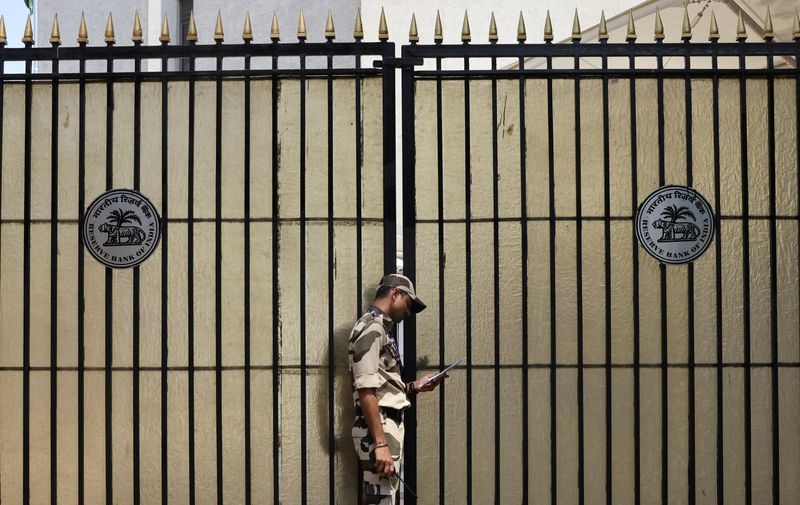(Reuters) – The Reserve Bank of India (RBI) cut its key repo rate by a larger-than-expected 50 basis points (bps) on Friday, a third consecutive reduction, as muted inflation provided space for policymakers to focus on supporting economic growth.
The Monetary Policy Committee (MPC), which consists of three RBI officials and three external members, cut the repo rate to 5.50%.
It has now cut rates by 100 basis points in 2025, starting with a quarter-point reduction in February, its first cut since May 2020. It made a similar-sized cut in April.
COMMENTARY:
SUJAN HAJRA, CHIEF ECONOMIST AND EXECUTIVE DIRECTOR, ANAND RATHI GROUP, MUMBAI
“The RBI’s 50 bps policy rate cut, coupled with a 100 bps reduction in the cash reserve ratio (CRR), exceeded both our expectations and the market consensus. As the Governor indicated, this frontloading of monetary easing reflects a clear intent to support growth while inflation remains benign.”
“At the same time, the policy stance has been shifted from ‘accommodative’ to ‘neutral’. Although this change might be read as a signal that the rate cut cycle is nearing its end, we believe it is aimed at tempering any potential ‘irrational exuberance’ in the financial markets.”
“Overall, the policy decision is constructive for both equity and debt markets. In equities, interest-sensitive sectors are poised to benefit. While lower rates and policy transmission could have weighed on bank net interest margins in the near term, the sizeable CRR cut provides a significant offset, making this a particularly positive move for banks.”
SACHCHIDANAND SHUKLA, GROUP CHIEF ECONOMIST AT LARSEN & TOUBRO, MUMBAI
“The RBI has gone ahead and utilized all the space afforded by inflation undershoot and underwhelming growth to deliver an outsized and less expected 50 bps rate cut.”
“Even more surprising is the fact that it has reversed its stance back to ‘neutral’. This must be one of the quickest changes or reversals in stance as it had moved to ‘accommodative’ stance only in its last policy in April, which meant only rate cuts or pauses, but going back to ‘neutral’ means RBI can move either side.”
(Reporting by Ananta Agarwal and Kashish Tandon in Bengaluru; Editing by Sumana Nandy)
